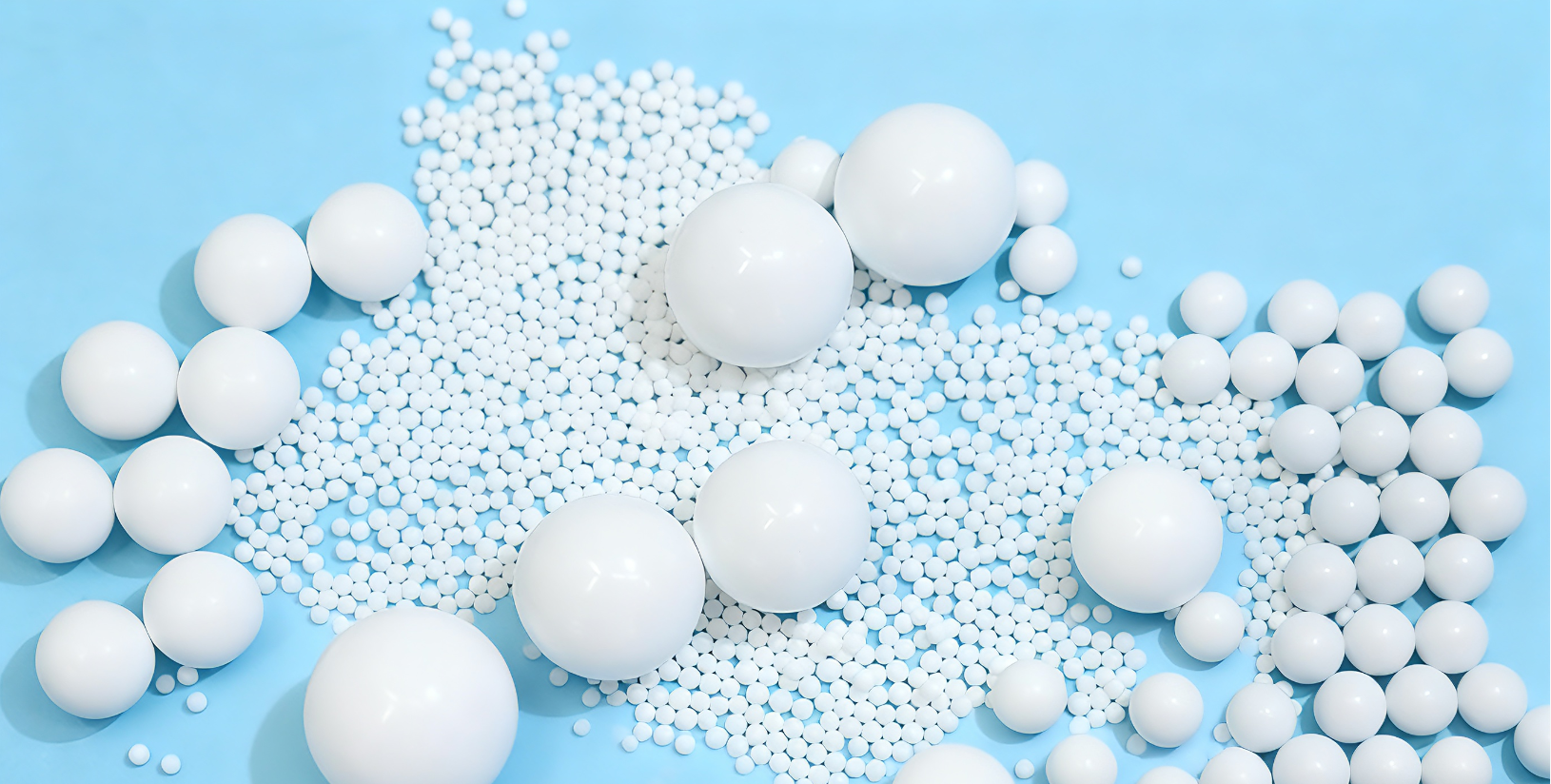
Alumina grinding balls are a leading choice for fine-milling and dispersion applications across numerous industries. Manufactured from high-purity 92%−99% Al2O3(aluminum oxide), these ceramic media are engineered for superior performance, offering a cost-effective and efficient solution for size reduction.
Key advantages of Cersol's alumina grinding balls include:
Exceptional Hardness and Wear Resistance: With a Mohs hardness of approximately 9, second only to diamond, alumina balls offer outstanding resistance to abrasion. This translates to a significantly longer service life and minimal media consumption, reducing operating costs and downtime for media replacement.
High Density: Despite being lighter than steel, alumina's high bulk density ensures effective impact and sheer forces within the mill, leading to faster grinding and finer particle size distribution compared to lighter media.
Low Contamination: The high purity of the aluminum oxide ensures minimal leaching or wear into the milled product. This is critical for applications where product purity is paramount, such as in ceramics, electronic materials, and pharmaceuticals. They are essentially white, non-magnetic, and iron-free.
Excellent Corrosion and Chemical Resistance: Alumina is chemically inert to most acids, alkalis, and solvents, making these balls suitable for use in a wide range of wet and dry grinding environments.
Thermal Stability: They maintain their properties under high temperatures generated during prolonged milling processes.
Key Processes and Parameters
The performance and characteristics of alumina grinding balls are controlled by the manufacturing process and specified parameters:
Manufacuring Process
Alumina grinding balls are typically manufactured using two main processes, each affecting the final properties:
(1)Isostatic Pressing (for high-purity 95%−99% alumina): Al2O3 powder is compacted under uniform high pressure and then sintered at high temperatures (over 1600 ℃). This results in a highly dense, homogeneous, and spherical media with low porosity and maximum strength.
(2)Rolling/Shaping and Sintering (for 92% alumina): A cheaper process where the powder is mixed with binders, shaped, dried, and then sintered.
Key Parameters
|
Parameter |
Typical Range |
Significance |
|
Al2O3 Content |
92%−99% |
Higher content means higher hardness, density, and lower wear rate. |
|
Specific Gravity (Density) |
3.6 to 3.9 g/cm3 |
Higher density improves grinding efficiency (faster size reduction). |
|
Water Absorption |
<0.01% by weight |
Low value indicates low porosity, which prevents media breakage and product absorption. |
|
Compressive Strength |
>2000 MPa |
A measure of resistance to crushing and impact forces in the mill. |
|
Hardness (Mohs) |
≈9 |
Indicates superior wear and abrasion resistance. |
|
Size Range |
0.5 mm to 70 mm |
Determined by the fineness requirement of the final product and the type of mill used. |
Typical Applications
Ceramics Industry: Grinding and processing of raw materials for structural ceramics, electronic ceramics (e.g., ferrites, dielectrics), glazes, and frits.
Mining and Minerals: Fine milling of mineral ores, including calcium carbonate (CaCO3), zirconium silicate (ZrSiO4), talc, barite, and various pigments.
Coatings and Paints: Dispersion and grinding of pigments, fillers, and additives to achieve uniform particle size distribution and color intensity.
Electronic Materials: Processing of high-purity powders for batteries (e.g., lithium-ion components), advanced magnetic materials, and semiconductors.
Chemicals and Pharmaceuticals: Grinding of active pharmaceutical ingredients (APIs), herbicides, pesticides, and other specialty chemicals where contamination control is essential.